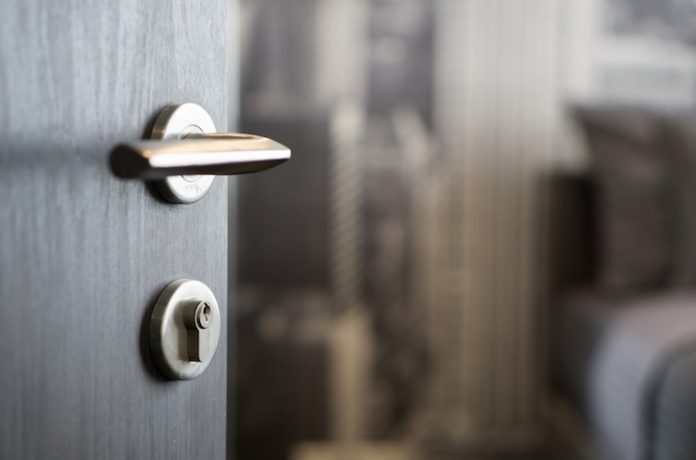
As 2021 nears its end, hoteliers across the United States will already be planning for the year ahead, and while budgets and capital expenditure are usually at the forefront of these plans, the unique challenges presented over the past two years mean that preparing for 2022 will require an unprecedented level of attention and forethought.
Alongside contingency plans and flexible budgeting designed to mitigate any potential setbacks during the year, careful consideration must also be given to staffing, supply chains, and commitments relating to legislation or brand mandates that have been delayed or deferred during the pandemic. Chief among these considerations are new technologies and procedures intended to limit the potential spread of COVID-19, however, impending panic button legislation across several states, and the deadline for compliance with brand commitments need to also be high on the list of priorities.
With a variety of external factors coming together at the same time, how will hotels plan investment and expenditure in 2022, and how is the fallout from the pandemic affecting how hotels invest in technologies? Explore what lays ahead in 2022 and what hoteliers need to know as 2021 comes to an end.
2022—The Good and the Bad for the Tourism Industry
The good news, of course, is that 2022 looks to be a year of strong recovery for hotels and the tourist industry. Increasing vaccination rates are bringing an end to unilateral lockdowns and other restrictions in the United States and borders are reopening to international travelers arriving from countries that have traditionally provided the bulk of U.S. tourism. The advent of hybrid working is also providing increased flexibility for a broad range of employees to step out of the office and into the wider world—while still maintaining productivity.
These factors point to an industry that can expect a welcome boost to business in 2022. Hotel occupancy rates are already picking up and approaching pre-pandemic levels in many markets. Hotel construction is once again in full swing, and domestic “revenge travel” is on the rise as employees use their PTO before it expires.
However, as hotels ramp up operations to meet rising demand, there are several challenges that lay ahead in 2022. Variants of COVID-19 are expected to grow. Labor shortages across the United States are already well documented, and this is a significant issue within the tourism industry where it is thought that around 50 percent of U.S. hospitality workers would not go back to their old jobs, and more than a third would not consider returning to the industry.
Supply chain shortages in all sectors and congestion at the ports of entry are leading to surging prices for those supplies in high demand. In turn, these disturbances are affecting hotel budgets and planning, as the scramble for limited materials and products becomes increasingly competitive and expensive.
If operating a hotel with all these constraints isn’t enough, the rise in “air rage” foretells an increased risk of similar issues at hotels. With the known history of assaults and other issues at hotels, and now this increased risk due to traveler’s frustrations, it is likely more hotel companies and legislatures will follow the CDC’s recommendations and require employee duress notification technologies (i.e. panic buttons).
What Does this Mean for Hoteliers and Panic Button Compliance?
It is estimated that around 2 million rooms will fall under mandates for panic button compliance in 2022. In many cases, these mandates have already been delayed over the past 18 months as the tourist industry has struggled to come to terms with unprecedented events related to the pandemic. However, compliance dates will almost certainly not be deferred again, and hoteliers must face up to these new deadlines or risk breaking legislative or brand requirements.
Thankfully, rolling out panic buttons across your hotels sooner rather than later has the potential to deliver several benefits and since many businesses are already planning and budgeting for 2022, now is the time to get ahead of the curve.
To begin with, investment in intelligent panic button tech (as opposed to “screamers”), can deliver increased trust and reliability. Despite endorsement by one large hotel company, screamers are universally considered inferior to continuously updated location-enabled panic buttons as they are ineffectual in isolated areas and may even increase the risk of incident escalation rather than act as a deterrent.
This false sense of security is easily avoided with the use of subtle, wearable panic buttons that act as silent alarms and provide precise location information. In fact, this type of technology is backed by the majority of hotel operators and brands, and many unions across the United States, and is also often specifically mandated by panic button laws.
Leading on from this, unions have had the upper hand during the pandemic and are demanding increased employee safety and security, supported by the worker-shortage. Partly because of increased awareness around working conditions motivated by the pandemic, and partly due to the industry’s own “#MeToo” and AHLA 5-Star Promise movements, panic buttons are fast becoming the go-to solution for hoteliers looking to reduce the risks faced by hotel employees.
This has the knock-on effect that those hotels with rigorous safety procedures and panic button systems are likely to enjoy increased recruitment levels, improved retention, and reduced liability. In fact, it’s a clear benefit that can be advertised when looking for employees and shared with existing employees alike.
How Can Hotels Get Ahead of the Curve with Panic Button Tech?
Of course, these benefits are a win-win for all involved, however, the reality today is that a perfect storm of high demand, ongoing supply chain issues, and low capital means that many hotels are concerned about the impact panic button mandates will have on their operations.
The good news is that panic buttons are easy to implement and train employees on as they become more popular across the industry.
Together, these approaches will help to maintain workforces and continue growing in the new year.
About the Author
Peter Klebanoff is senior vice president, business development for ROAR for Good.











